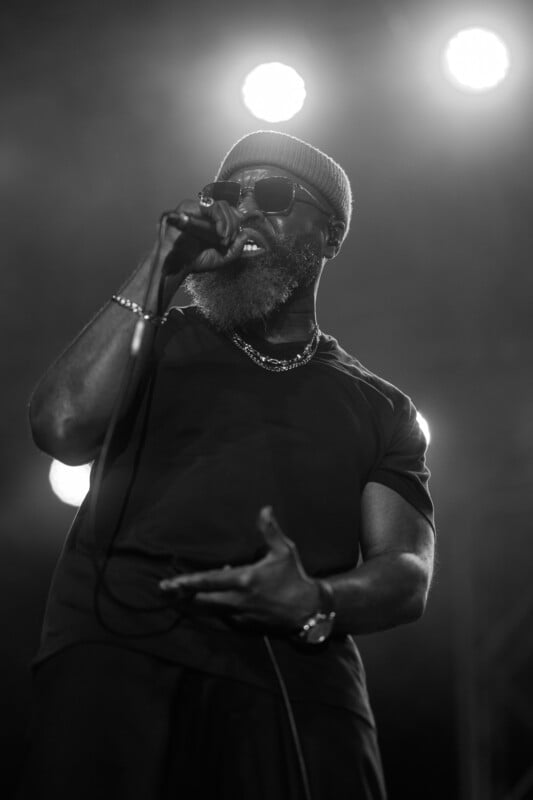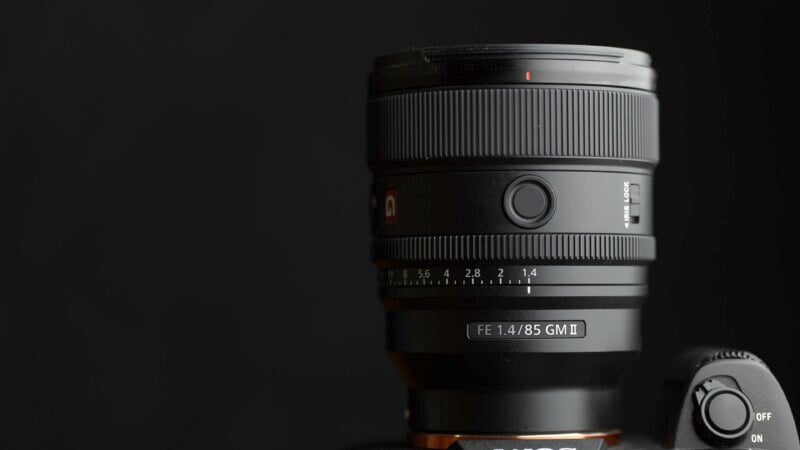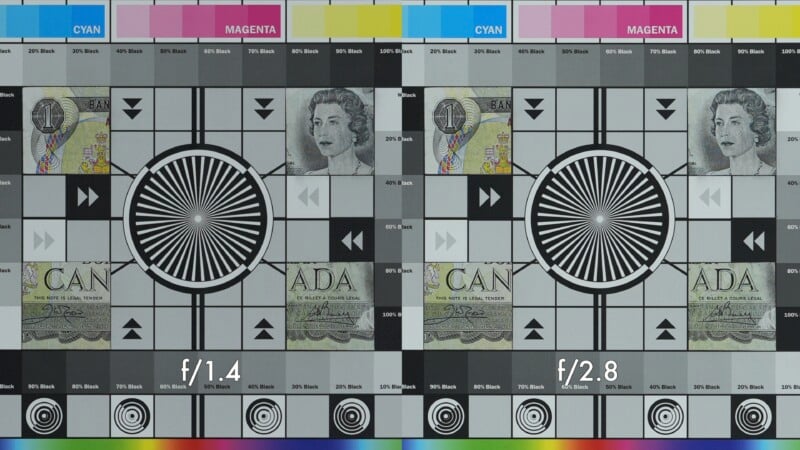Sony 85mm f/1.4 GM II Review: Smaller, Sharper, Speedier
Every manufacturer should have a good, fast 85mm lens, and the fact is, Sony already makes one. Sony has been on a real kick lately to update some of its earlier — and questionable — lenses that were released near the beginning of the E-mount system. I liked the original G-Master 85mm f/1.4 but it had some flaws and is showing its age.
Perfect timing then, to try out the latest version II of the G-Master 85mm f/1.4, and even better because the Calgary Folk Fest was taking place at the same time. The 85mm should give me the look I want and collect the light I need for some concert photography as the evening encroaches. I was fortunate to get press access to the shows which would allow me to get right up and close to the action where the 85mm range can do its best work.

Sony G-Master 85mm f/1.4 II Review: How it Handles
I love the 85mm focal length. It’s long enough to capture head-and-shoulders portraits, and short enough to be used as a general-purpose lens on the streets. You can also get some very fast versions that give the ultra-shallow depth of field look.
Like all G-Master lenses, the second version of the 85mm is built incredibly well. It is fully weather-sealed and has a very similar look and feel to the original. 85mm f/1.4 lenses are typically going to be bulky because of the large glass elements required to achieve such a bright aperture however, what blew me away was how much lighter the G-Master 85mm f/1.4 II is. Weighing only 22.6 ounces (642 grams), the Sony 85mm is easy to take with you and even easier to shoot with. You get a smooth manual focusing ring and customizable buttons and there is also a manual focus switch and an aperture ring that can be set for either smooth or click-stop functionality.


The hood is a newer design with a handy push-button interface and the filter thread is a common 77mm diameter. Sony decided to switch to an 11-bladed aperture to try and provide as smooth a look to the bokeh as possible. I was eager to see just how much that aspect had improved because the original lens had some problems with the look of the out-of-focus areas.

Sony G-Master 85mm f/1.4 II Review: How it Shoots
So getting right into the look of the depth of field, I found the new lens to be free of the soap bubbles and onion rings that the first lens suffered from. There is a pleasant cat’s eye effect to the bokeh which suits portraits. The specular highlights are clean and smooth-looking. When stopped down, the look of the highlights is almost perfectly round and the backgrounds look smooth and don’t distract from the rest of the scene.


The faster linear autofocus motors drive the 85mm II much faster than its predecessor. When I was shooting people in the crowds or musicians on stage, the lens tracked quickly and accurately without delay. This should please not only street photographers but anyone using this lens for weddings and event work as well.


I had a clear day at the Folk Fest so I pointed the G-Master at the sun and did some flare testing. Sony coatings are very reliable and the new 85mm is no exception. Loss of contrast is minimal and there are no ghosting issues to worry about. Feel free to shoot this lens with backlit portraits or bright stage lights.


Sony has slowly updated its lens lineup to perform better for a video and one of the issues with the original 85mm was heavy lens breathing. This causes the field of view to change rapidly when you focus the lens and is detrimental for video work when you pull focus. The new 85mm f/1.4 has some minor breathing but it is far less than what was present in the first iteration of this lens. Most users will find it acceptable and Sony’s Breathing Compensation feature can take care of the rest.


A lens that is going to do a lot of shooting at f/1.4 better be sharp wide open, especially for low-light concert shoots. Luckily, Sony has made the 85mm G-Master II one of the sharpest lenses I have ever used. Performance at f/1.4 is as sharp as you could want with almost no lack of contrast. As you stop the lens down the improvement is minimal because it starts off so well wide open. The corners at f/1.4 are quite good as well and you do see some improvement stopping down but overall sharpness is excellent no matter where you focus this lens. Even on the 60-megapixel Sony A7RV, I was impressed by how well the new 85mm did at f/1.4.

Fast lenses tend to have issues with LoCA, which are longitudinal chromatic aberrations that cause color fringing in the out-of-focus areas. The Sony 85mm II is so well corrected that the LoCA is barely visible at f/1.4 and basically gone beyond that. There will be no need to worry about removing this LoCA in post-production.

Sony’s G-Master 85mm f/1.4 II is a Near Perfect Product
So far, Sony has done an amazing job of updating its earlier lens designs, and optics like the G-Master 70-200mm and 24-70mm are good examples. The original 85mm definitely needed some improvement and Sony has delivered because I can’t really find any issues with the 85mm f/1.4 II.
Everything that plagued the original has been addressed and the new lens is sharp and fast focusing. The only issues are going to be a bit of lens breathing and a fairly pedestrian close focusing distance but the real pain of owning this lens is the asking price. But if you enjoy this focal length as much as I do, and you want the best possible option, the latest G-Master is worth the relatively high $1,800 price.

Are There Alternatives?
The Sigma 85mm f/1.4 Art is a fantastic lens and has excellent performance at f/1.4. It is better than the original Sony 85mm f/1.4 GM and comes in at a more tolerable price but it can’t quite match the new G-Master’s performance.
Should You Buy It?
Yes. This is a near-perfect lens that does exactly what you want a fast 85mm to do. If you have the budget, you should take the plunge.